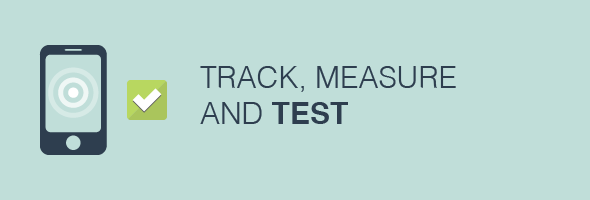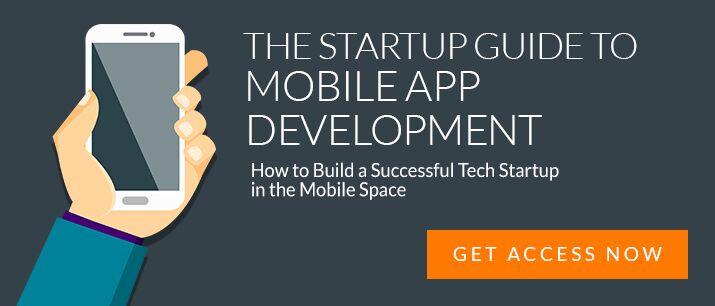7 Steps to Acquiring A HUGE App Userbase
The biggest problem app developers face when launching their app is getting a high volume of users to sustain an income.
That’s why 68% of apps fall flat on their face.
In today’s app economy you have to be aggressive to win.
In this article we’ll cover off the best method of acquiring a high volume of app users quickly.
The strategy is called User Acquisition. Or in simple terms: Buying users.
See also: 40 Mobile App Acquisition Tactics For The Broke And Desperate
In a user acquisition campaign, we tap into a variety of different traffic sources (ad networks, etc.) to buy traffic and direct them into our app.
If you use apps you’ll be familiar with banner ads and full page ads that advertise other applications.
These are the result of a user acquisitions campaign through an ad network.
Buying traffic isn’t free though so it pays to be very smart with it. I’ve broken down the process into 7 steps.

1. Define Your Goals
A goal within an app can also be referred to as an ‘event’. An event/goal is an action that you want the user to take, for example:
- Buy an in-app purchase
- Complete the registration process
- Launch the app 6 times
- Share it on Facebook
It can be whatever you want it to be!
The first thing you need to do is define what your goals are so that you can track them in the later steps.

2. Who’s Your Perfect User?
Your perfect user can be defined as someone who completes the goals you set.
Targeting these types of users will complete more goals, more often and ultimately drive higher revenue. Just focus on these guys!
The ad networks aren’t set up to understand who your perfect user is. In fact, it’s not in their interest to let you know because they want you to spend more.
Targeting in on your perfect user is your job and the best ways to get loyal users are to:
- Step A – Define the characteristics of your loyal user: country, device, operating system, etc.
- Step B – Automate the tracking of these loyal user characteristics.
- Step C – Identify the traffic sources that generated these loyal users.
- Step D – Steer your ad spend toward these traffic sources.
- Step E – Track all of your users’ interactions with your app.
See also: How To Create A User Persona
These are quick steps and we’ll go into more detail about these. Please keep reading…

3. Spray’n’Pray
Start advertising your app on a variety of ad networks.
I like to call this step the “Spray’n’Pray” because you’re essentially throwing your app out into a number of different ad networks and tracking which ones worked the best.
It’s important that the ad networks you advertise on are for mobile only.
There’s no point advertising on desktop browsers to people on laptops and desktop computers because they’re not likely to click through and download your app.
There are some sub-steps here so I’ll cover them off as well:
3.1 From the “Spray’n’Pray” you’ll need to track which of the traffic sources gave you the best users…not the most, but the best.
This is tricky because you need a software that can track multiple traffic sources as well as analyse the individual users which ones are completing the goals inside your application.
We wrote a post on the 10 Most Popular App Analytics Tools that’ll give you some great insights into some app analytics tools.
3.2 Using your chosen app analytics tool you’ll need to identify your perfect users’ characteristics and their average lifetime value.
This will help you identify how much you’re willing to spend per user.
3.3 It’s important that you try out a variety of traffic sources just to ensure that you’re getting the best bang-for-your-buck.
If you’re not spreading yourself out then you’re likely not getting the best possible value per user and you could be missing out on opportunities for identifying the best traffic sources.
It’s all about driving a high volume of users into your app at the lowest possible price.
Some great traffic sources to tap into are:
- Mobile ad networks like Chartboost.
- Incentive based download programs like Tapjoy, App-o-day.
- Real-time bidding platforms like Mopub.
By dipping into a number of networks you’re also protecting yourself from saturating your traffic sources which normally results in a higher acquisition cost.

4. Keep Track On Organic Users
Organic users are those who actively seek out and download your app without having to be directly exposed to any of your marketing.
They’ve got a much higher lifetime value than a user acquired from an ad network and are a great example of the kind of users you want to target, i.e. your Perfect User.
Watch them closely and identify their characteristics. These are the people who you want to target in your user acquisitions campaign.
Starting off, your key objective for a user acquisition campaign should be to track and measure “organic lift.”
There’s a natural bond between the user acquisitions campaign and the App Store ranking of an app that greatly affect the organic download rate.
This bond is called the “organic lift.” In simple terms, a higher user acquisition will drive your app higher in the App Store rankings which results in greater volume of organic users.
The key is to identify what rank gives you the highest number of organic users at the lowest acquisition cost.
This can be a bit of a balancing act as you adjust expenditure to test your return on investment.
Some apps may get no more downloads at rank 15 then they do at rank 25, so why throw your money at something when the extra spend has a low (or no) ROI?
It’s important to also keep in mind how the Apple App Store ranking factors differ from those of Google Play (Android). Check it out:
-
Apple App Store
In the Apple App Store, rank is affected by 3 elements:
- Volume of downloads
- Ratings & Reviews and
- App Store Optimisation.
Users acquired from your acquisitions campaign will improve your rank, which as a result will get you a higher volume of organic downloads.
So the conversion to organic lift is the ratio of downloads per acquired user to organic download.
-
Google Play
Google Play is a little bit different in that the volume of downloads isn’t as important as the usage itself.
Pretty much, the more your app is being ‘used’ (time spent in use / number of people using it) determines your rank on the Google Play store.
It’s a much smarter system because it puts the quality of the app at the top of priority for any app developer.
In time you’ll start to understand your organic and acquired users, and profiling these characters will help you guide your ad spend.
We’ve written a detailed run down of the differences in app store optimisation here.

5. What Are Your Best Performing Days Of The Week?
Once you’ve been doing this for a while you’ll begin to identify trends. Some days could be the Hay Day for various reasons depending on your market and other days can be a little less fruitful.
With that in mind you need to make sure that you allocate your budget accordingly.
Your total expenditure for Ad Network A on Tuesday and Wednesday could be the same.
But you might get more downloads on Wednesdays. So what day should you be spending your money?

6. Download-Rate Vs Click-Through-Rate
Keep an eye on your ads and determine which ads/traffic sources get you the highest download-rate (rather than click-through-rate) because a click-through doesn’t necessarily turn into a download.
And you don’t want to deliberately pay for clicks that don’t turn into downloads.

7. Track, Measure, Test…
Just like any other marketing strategy you have to test and measure everything.
The first approach is to test your sources to measure which ones worked the best. Test and measure everything in your marketing.
Here is a list of things that can be tested:
- Traffic sources
- Targeted users
- Creative (what the ad looks like)
- The app itself
- Days
- etc.
You can tweak each module as well to see if making a specific change will reap you a better result. If not, then try something else.
Avoid tweaking too many elements at once because some elements effect each other and could throw out your results, leaving you with an inaccurate analysis.
The Wrap
Before running an acquisitions campaign it’s important to first understand what you want to achieve.
In most cases, building a user base is a ‘means-to-an-end’, but it’s not an ‘end’. The end is ‘to-generate-revenue’.
So setting your goals and orientating them around your ‘end’ is absolutely critical to hitting the ambitious numbers I’m sure you’ve set for yourself!
Latest posts by Logan Merrick (see all)
- Ep 18: Collective Campus’ CEO on Intrapreneurship and Corporate Innovation - December 20, 2016
- 50 User Engagement Strategies For Planning Memorable Mobile Experiences - December 19, 2016
- Latest Data: App Monetisation Trends And Drivers 2015-2020 - November 25, 2016




